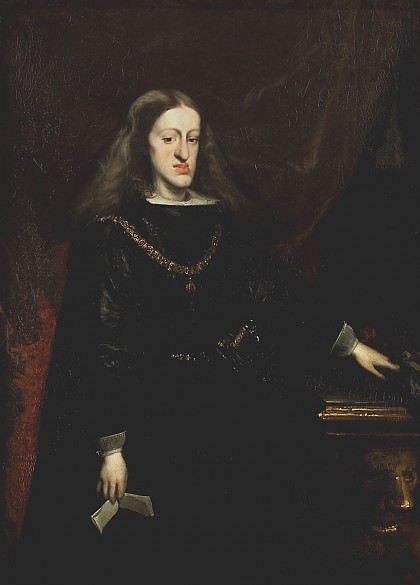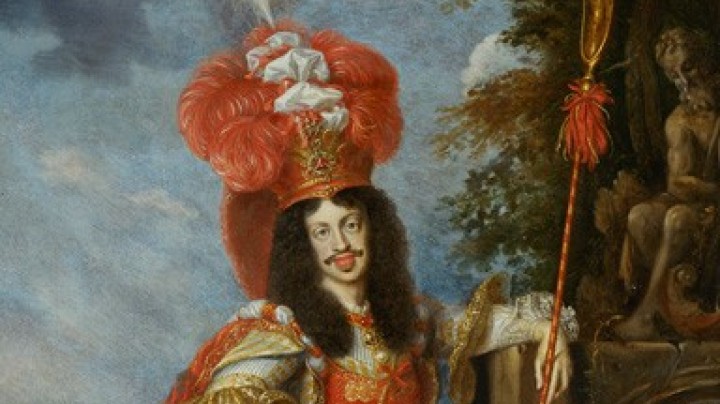Charles II and the issue of the succession
Despite being twice married, Charles’s feeble physical state held out little prospect of his siring a successor. The king’s ability to father a child became a political issue which preoccupied all of Europe.
Charles’s first wife, Marie Louise von Orléans (1662–1689), was the eldest daughter of the brother of Louis XIV, Duke Philip of Orléans, and Henrietta Anne of England.
The young couple were systematically excluded from governing by Charles’s mother. Marie Louise acted naively and with a lack of political ambition, making enemies at court and soon squandering any sympathies she might initially have had in the Spanish people with her extravagant lifestyle. Nonetheless, the years of their marriage were the happiest time of Charles’s life. Sensitive and full of zest for life, his wife had a positive influence on him, but unfortunately died of food poisoning in 1689, after only ten years of a marriage which produced no offspring.
Under urgent pressure to sire an heir, Charles was married again almost immediately. His mother’s choice of bride, Maria Anna of Palatinate-Neuburg (1667–1740), was from the Wittelsbach dynasty, supporters of the Habsburg party in the Holy Roman Empire. The new queen was a sister of Eleonore of Palatinate-Neuburg, the wife of Emperor Leopold I. Thus Charles and the head of the Austrian line shared not only a close blood relationship but were also related by marriage through their wives.
Charles’s second wife was politically very ambitious and had soon carved out an important position for herself at court, often clashing with her mother-in-law. After the latter’s death in 1696 the young queen now advanced into the political foreground. However, the Wittelsbach princess was rejected as a foreigner by broad swathes of the Spanish nobility. The negative atmosphere at court and across the land was intensified by a rapid deterioration in the king’s health which manifested itself in fainting fits and seizures.
In the last decade of the king’s life it became increasingly evident that the other European powers could hardly wait for his death and were busy dividing up his inheritance while he was still alive. He himself no longer fully understood what was going on. Thus he was coerced into signing several agreements and wills which contradicted one another. In 1698, on the initiative of the Netherlands under William III of Orange, a compromise was reached according to which the Spanish crown was to pass to the crown prince of Bavaria, Joseph Ferdinand. The latter was Charles’s great-nephew, being the grandson of his sister Margarita Teresa. Moreover, France and Austria had been promised territories in compensation for their claims. This plan that had been laboriously thrashed out was reduced to nothing when the Bavarian crown prince died suddenly in 1699.
Charles once again became the victim of various intrigues and attempts at influence by his wife, courtiers and the ambassadors of the European Great Powers. Exhausted and approaching death, the Spanish king became a pawn in the hands of the conflicting parties. The pro-French party at court eventually prevailed, managing to get the king to sign a will in favour of the Bourbon claim shortly before his death. ‘God alone bestows kingdoms … I am nothing’, was Charles’s comment on this diplomatic tug-of-war.
The contents of the will, according to which Philip of Anjou, the grandson of the Sun King and his wife Maria Teresa, one of Charles’s sisters, was to assume the Spanish inheritance, was not recognized by Austria and its allies. Charles was released from his tragic life on 1 November 1700, and shortly afterwards the War of the Spanish Succession began, a conflict that was to last until 1714 and affect broad swathes of Europe.














